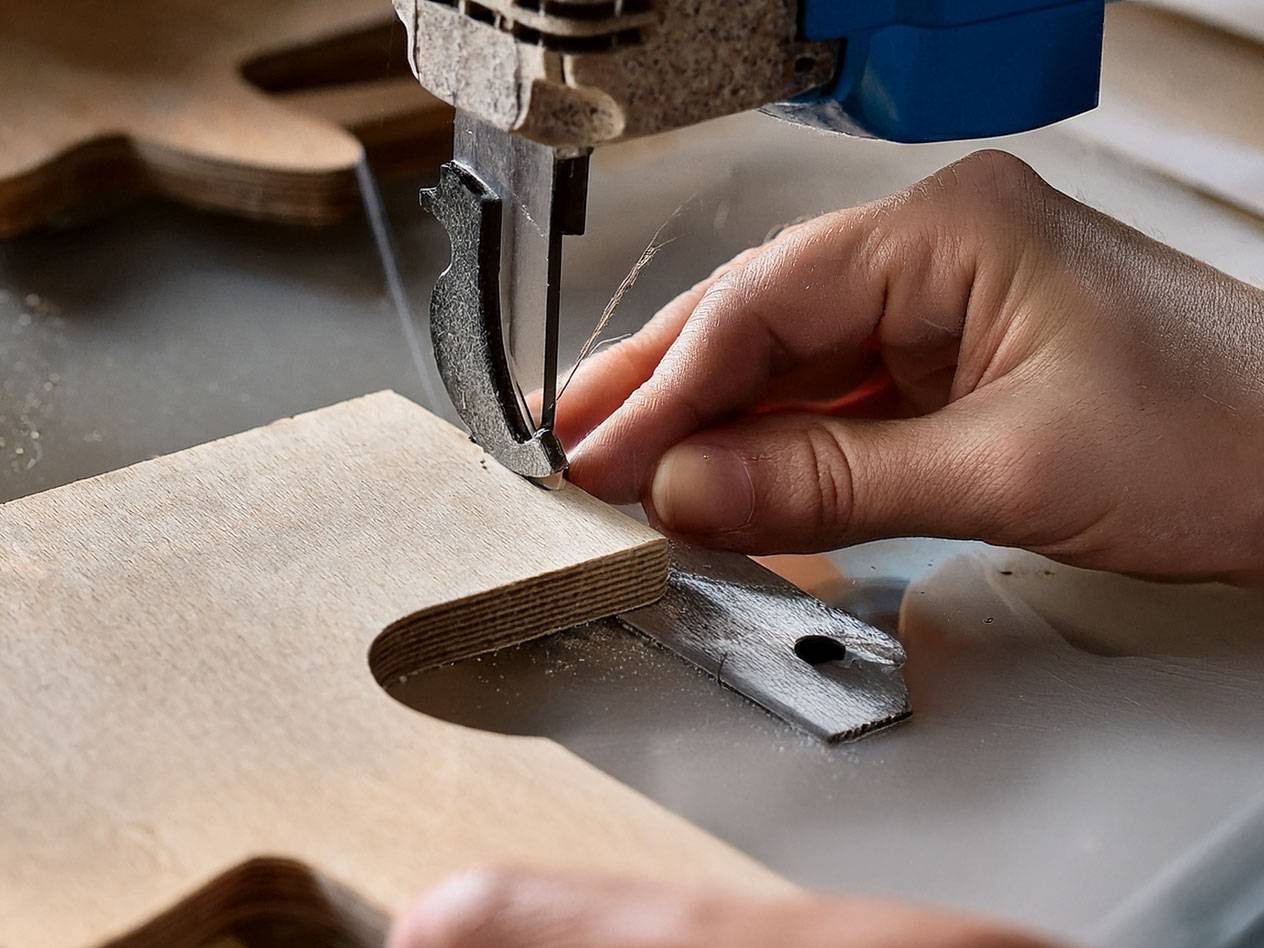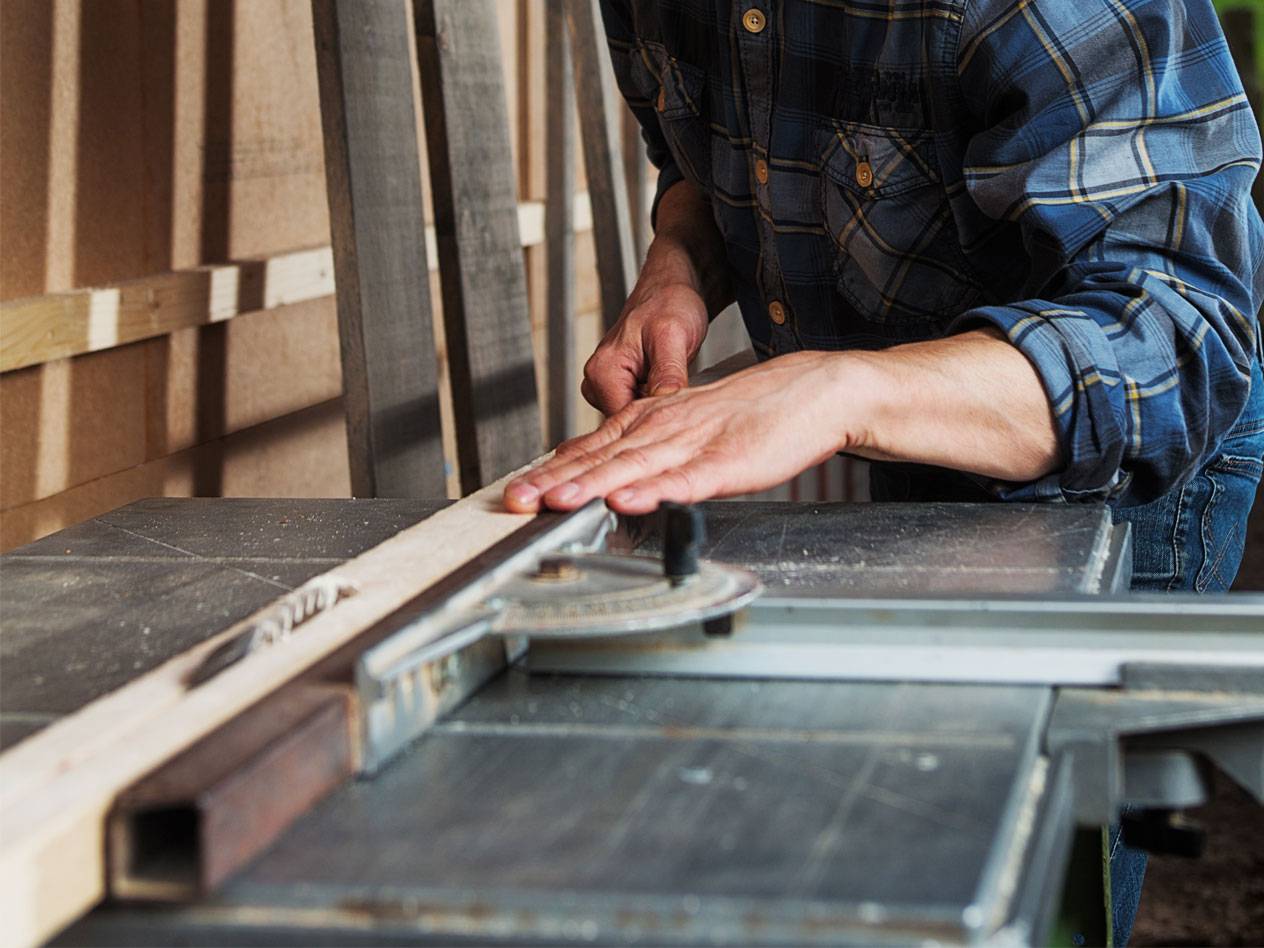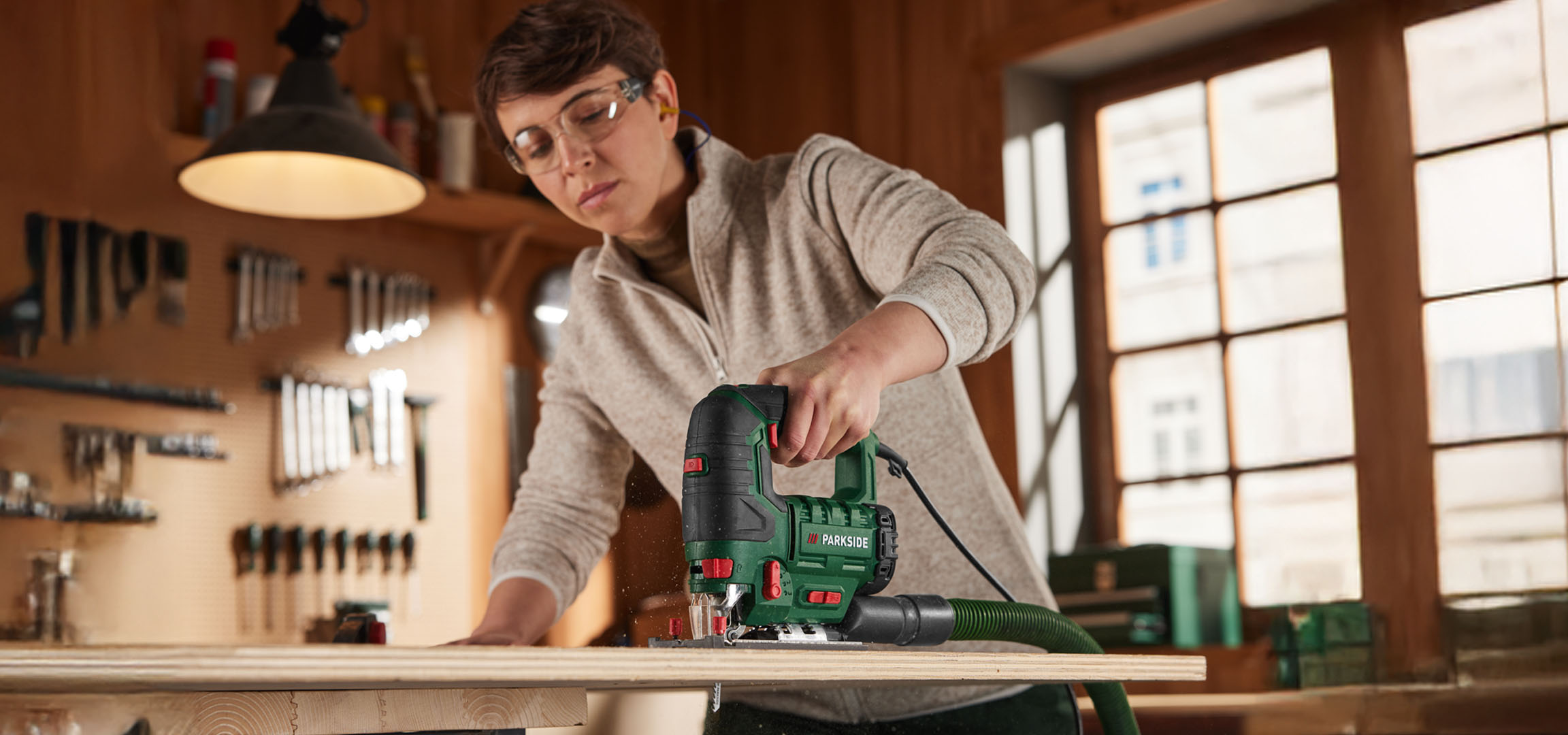Beams, Boards, Shavings: Sawing Wood Made Easy
Wood is the most widely used material for DIY projects. When sawing wood, there are a few points to consider. Choosing the right wood saw is crucial to achieving the best results. The following guide reveals which saw is suitable for which purpose and provides additional tips.
Table of Contents:
- Special Tools and All-Rounders
- Choosing the Right Saw for the Task
- Useful Tips for Sawing Wood
- Noise Pollution from Sawing: How Long Can You Saw Wood?
Special Tools and All-Rounders
Sawing wood can take various forms: fine and coarse cuts, straight and curved, from the edge of the workpiece or in the middle. For each task, there is a specialized tool. Whether powered electrically or manually, each tool has its justification. Additionally, there are practical all-rounders.
Choosing the Right Saw for the Task
The appropriate saw depends primarily on three criteria: the size of the workpiece, precision requirements, and the type of cut. The following examples of applications for different saws range from rough work with a chainsaw to delicate work with a scroll saw.
Tip:
For woodworking, there are universal saw blades that can be used for almost all types of wood. Specialized blades are only necessary in rare exceptions.
Sawing Firewood for Fireplace and Wood Stove
Firewood does not require fine work. Frayed edges and rough cuts do not matter here. Therefore, the chainsaw is an excellent tool for this application, saving time and effort. Alternatively, firewood can be split traditionally with a hatchet or axe.
Frequently Asked Question
In some communities, private individuals are allowed to cut firewood for personal use. But how long can you saw wood in the forest? This can vary seasonally and even by state. To be sure, it is best to ask the local forester.

Cutting Beams, Boards, and More
Wood beams can be worked with a chainsaw, but achieving uniform cut surfaces is difficult. A better tool for this purpose is the miter saw. It can be used for miters and cuts beams, boards, and laminate uniformly.
Working with Wood Panels
Plywood, OSB, or MDF panels are best worked with a table saw. Alternatively, a plunge saw guided by a rail through the material is suitable. For thicker panels, a hand-held circular saw is necessary. It allows deeper cuts but is less precise compared to the plunge and table saws. Sawing wood lying flat is not as precise as with a table saw and plunge saw.

Sawing Figures from Wood
For any type of shaped cut, a fret saw is best suited. Its mechanized counterpart is the scroll saw. These tools allow for cutting complex shapes with corners and curves. If only straight lines and angles need to be cut, a jigsaw or band saw is sufficient. Although round cuts are also possible with these, the result is usually not very clean. Very complicated and intricate shapes may require carving work.

Useful Tips for Sawing Wood
For particularly clean cut surfaces and edges, you can cover the wood surface with tape to prevent fraying, especially for veneered wood.
Tip:
The sharper the saw blade, the better the result.
Any shaped cut should be drawn with a pencil beforehand. Practical templates and cutting guides are helpful.
If you need to saw at a consistent angle, a tiltable saw is recommended. This feature is mainly found in plunge saws, miter saws, and scroll saws. Straight cuts are best achieved with a guide rail. Also, note that sometimes the cutting speed needs to be reduced during woodworking to avoid unsightly burns and scorch marks on the edges.
Noise Pollution from Sawing: When Can You Saw Wood?
How long you can carry out sawing work cannot be uniformly stated. It depends on the regulations of the federal state and the city or municipality. Additionally, house rules may include guidelines on quiet times. Loud electric devices are not allowed to be used during these times. Tools like a fret saw are usually unproblematic as long as the noise does not exceed room volume.
Summary
For home use, there are some wood sawing tasks that are particularly common. With these few tools, your toolbox is equipped for almost all eventualities:
- Chainsaw: For firewood and garden work.
- Plunge Saw: For most straight cuts, as it can even make cutouts.
- Scroll Saw: For intricate shapes and fine cuts.
- Angle Grinder: A versatile tool. With attachments like a cutting disc, it can saw wood in various ways.

